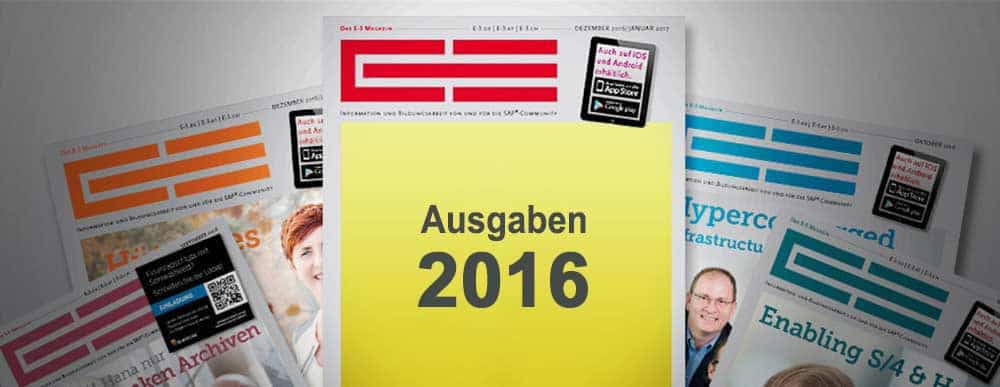SAP HR processes on-premise and in the cloud


At the 2015 DSAG Congress in Bremen, an existing Austrian SAP customer came forward with concerns about the existence of the individual manifestations of country-specific SAP HR solutions, because SAP cloud solutions are becoming very standardized. Is this true?
Rainer Brand: On the one hand, we understand the concerns of SAP HCM legacy customers. On the other hand, the use of HR cloud solutions offers the opportunity to standardize and simplify processes.
SAP customers still need a lot of education in this area, because they often lack knowledge about the advantages of a hybrid HCM landscape and the correct classification of the individual modules.
At this point, we start by analyzing the current state of the customer's HR processes. On this basis, we work together to develop a target model that shows which HR processes and data will be moved to the cloud in the future and which will remain in the "old" on-premise world. The objective is to combine the best of both worlds and thus make HR processes even more efficient.
Where does the future of SAP HR/HCM solutions lie? On-premise or in the cloud?
Fire: This question is not so easy to answer. In our view, both worlds will have their right to exist in the coming years. Classic HR processes such as payroll or time management will continue to be carried out in the on-premise landscape for a long time to come.
This is especially true for companies in Germany, where the relationship between employee and employer is very much characterized by co-determination. The processes involved in payroll and time management vary from company to company.
Strategic HR functions in particular should be moved to the cloud. HR professionals today want to perform tasks such as the HR interview with dynamic, visually appealing and easy-to-use tools that must also be available on the go on a smartphone or tablet.
We expect most companies to use a hybrid HR landscape within the next five to ten years.
Personnel administration and payroll often have country-specific characteristics. However, a cloud is only profitable for the provider if there are global standards. So can HCM with SuccessFactors be a model for success?
Fire: The answer to this question is a resounding yes. We have already unified our customers' global structures in the past by standardizing HR administration processes.
For example, we implemented a global HR system based on SAP HCM for a customer on-premise. In this case, a cloud solution such as SAP SuccessFactors Employee Central would offer real added value because it already contains many functionalities that previously had to be laboriously developed in-house.
The cloud software also offers easy technical access. This plays an important role because there is no longer any need to roll out an SAP GUI. We are currently converting the first customers to SAP SuccessFactors Employee Central - with great success.
How does Treorbis position itself on the border between global standardization with SuccessFactors and Fieldglass and customized on-premise HCM solutions?
Brand: We see ourselves first and foremost as integration specialists. Thanks to our 15 years of experience in the HR sector, we can accurately assess which processes are best kept in the cloud and which ones it makes sense to continue to operate on-premise.
What advice would you give to an HR R/3 user regarding a release upgrade and cloud computing?
Fire: We advise all customers to switch to the latest SAP release. In addition, we talk to customers about the introduction of modern user interface technology such as SAPUI5 or Fiori.
When it comes to payroll or personnel time management, we tend to take the conservative approach in our consulting strategy. The customer should host the payroll on their own system or in our service data center.
From our point of view, a cloud solution cannot adequately map the complex payroll as we know it today. There is hardly any way to intervene in the standard processes and customize them. We focus on a hybrid solution model in HR consulting.
If you can't outsource all of your HR management and development, what are the options for new customers?
Fire: Complete SAP HR outsourcing is out of the question for most of our customers. Rather, the realization has matured that we, as an HR service provider, must develop into the business partner of the company management.
In the future, routine tasks such as entering vacation and sick leave certificates in SAP HCM will not be among the core tasks of an HR clerk. For this reason, we offer HR process outsourcing in collaboration with the experts from our Business Process Outsourcing (BPO) network right up to the intersection between HR business partners and the traditional HR department.
From a company's point of view, outsourcing personnel development is not expedient. In the future, the associated tasks will be among the key functions between a company and its employees.
What are the HCM trending topics in 2016? Can you give a brief preview of the E-3 cover story May?
Fire: From my point of view, the coexistence of on-premise and on-demand (cloud) and their optimal alignment to the needs of customers is a particularly important aspect. From our point of view, one does not exclude the other.
In this way, a powerful and flexible HR platform is created with which to meet the HR requirements of the future. Since HR is constantly facing new challenges, it is also necessary to constantly question whether the planned HR strategy is still the right one or needs to be readjusted.
Therefore, the interfaces between the individual SAP HR applications should be designed generically so that individual software modules can be exchanged with reasonable effort.





